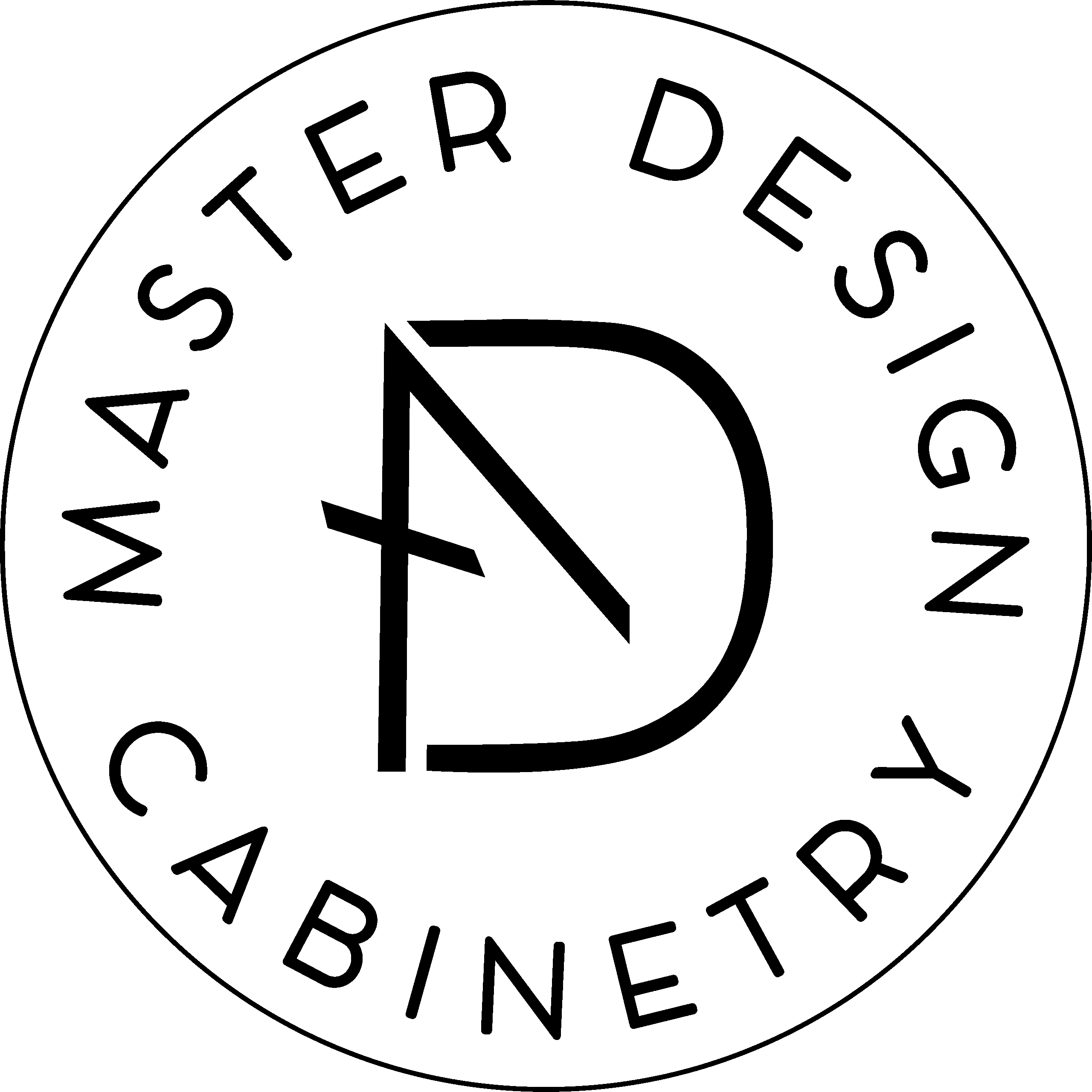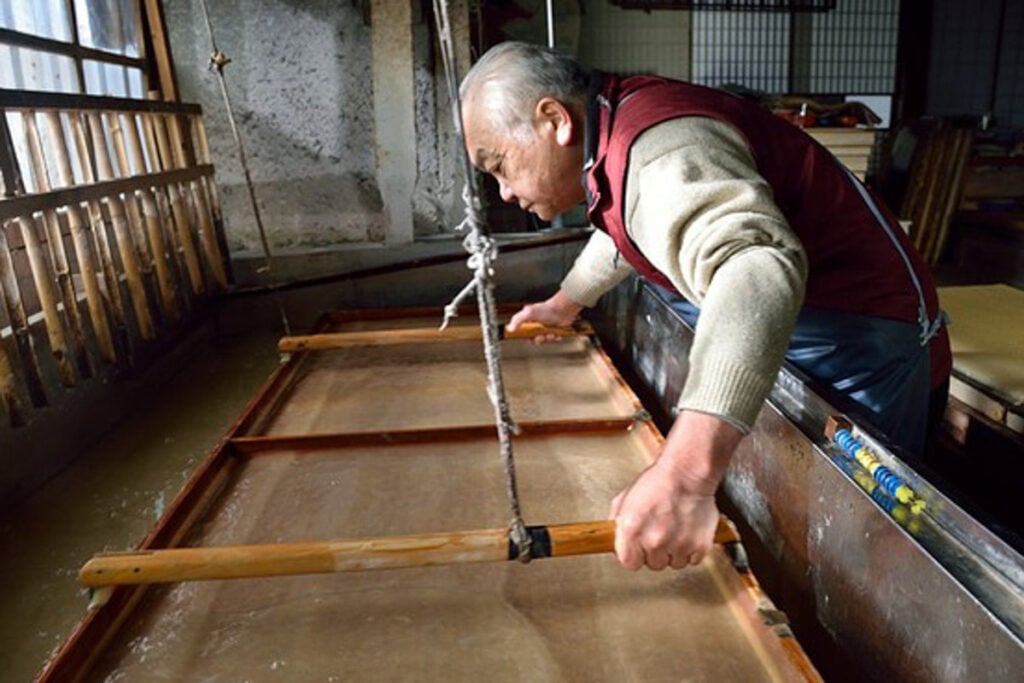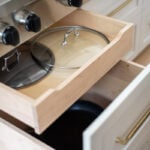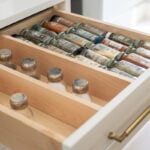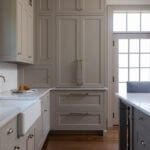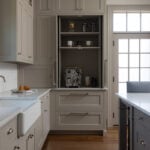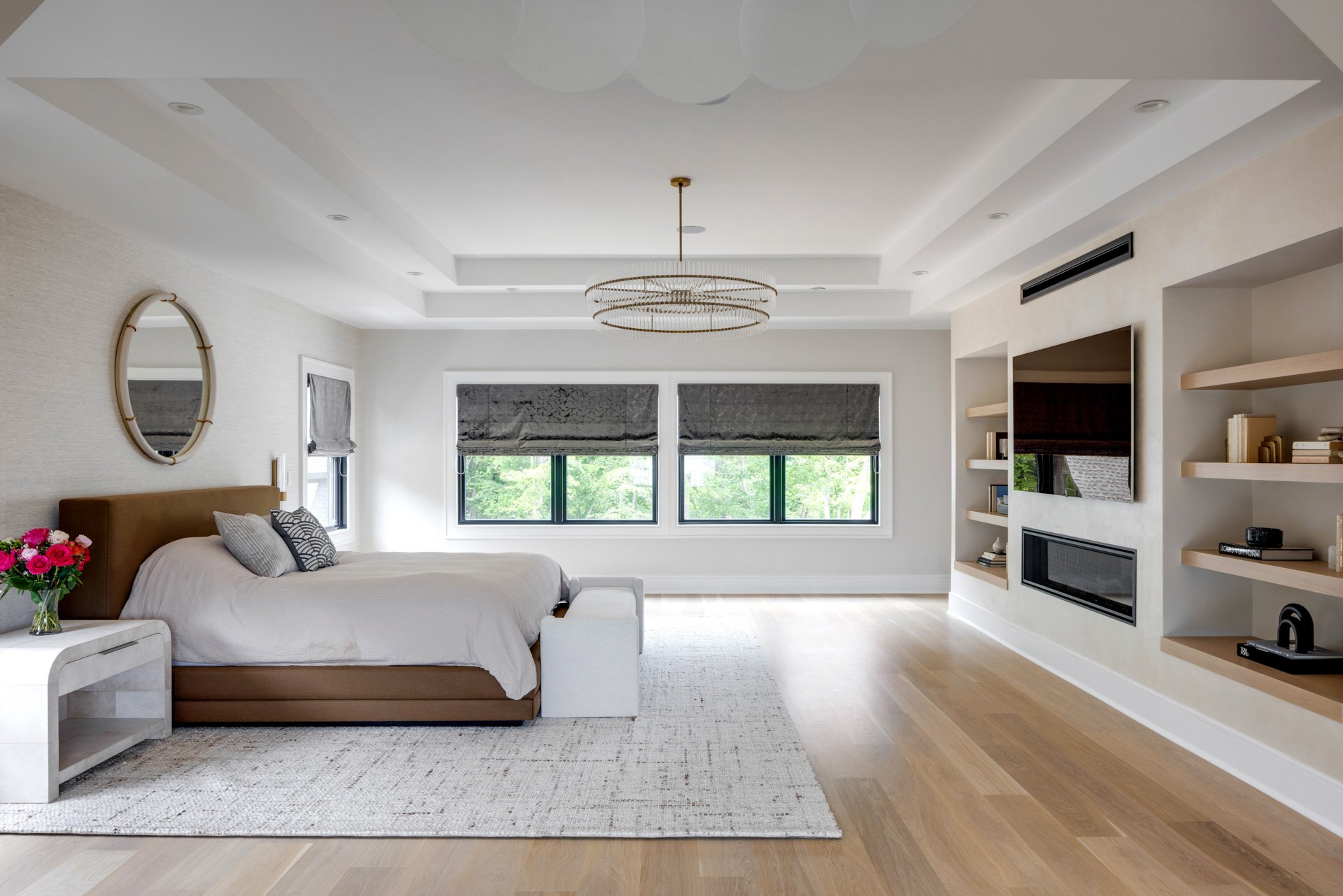
Table of Contents
In the world of interior design, trends often come and go, fleeting moments of aesthetic interest. Every so often, however, a design philosophy emerges that feels less like a trend and more like a timeless principle for living. Japandi design is one such phenomenon. A thoughtful fusion of Japanese and Scandinavian aesthetics, its popularity has surged in design-forward regions such as New York and California. It answers a collective desire for peace and refuge in our busy lives, becoming a hallmark of what many now call quiet luxury.
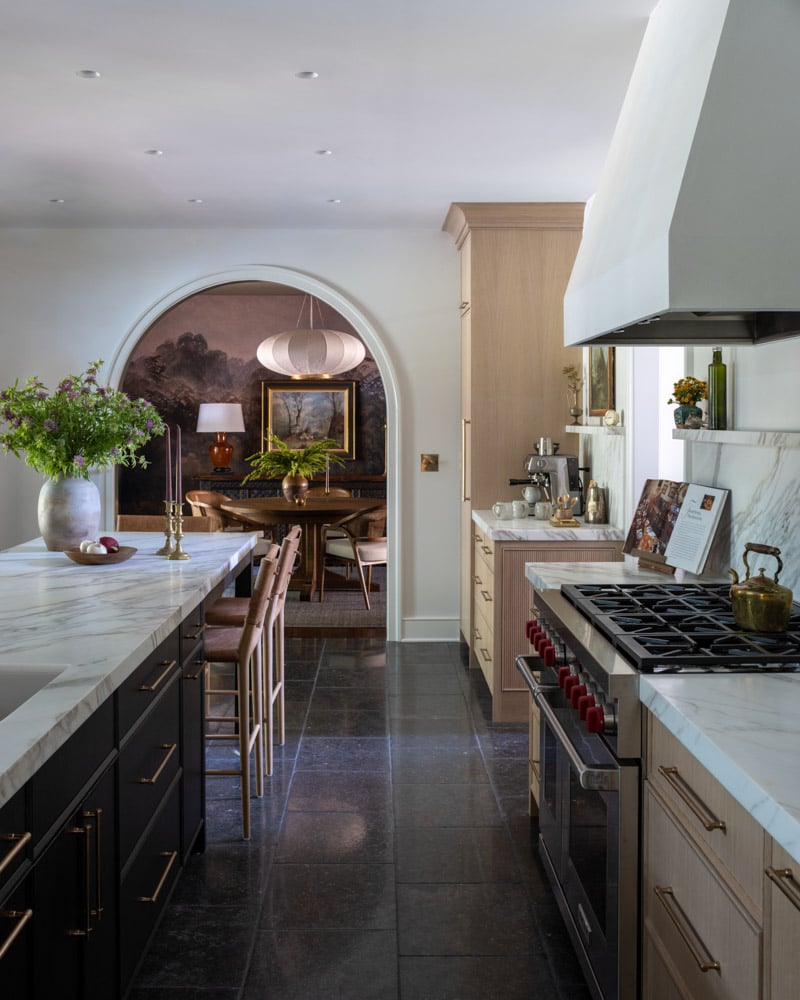
At Master Design Cabinetry, we believe the most beautiful spaces are those that reflect not only a sophisticated aesthetic but also a sense of personal sanctuary. Japandi design resonates deeply with our own values of bespoke craftsmanship, timeless quality, and collaborative partnership. It’s about creating an environment that is both beautiful to behold and restorative to inhabit—a space that feels, as one designer noted, “modern yet deeply inviting.”
This guide is our invitation to you to explore Japandi beyond the surface. We’ll delve into the philosophies that give it soul, the materials that give it texture, and the craftsmanship that gives it lasting value. Whether you are a homeowner dreaming of a more tranquil space or a designer collaborating on a client’s vision, we hope to answer your questions and offer inspiration for embracing this art of serene living.
The Soul of Japandi: A Harmony of Philosophies
What is Japandi style at its core? To truly understand it, we must look to the two cultures from which it is born. It is a thoughtful fusion—a dialogue between Japanese minimalism and Scandinavian comfort that began over a century ago when Danish designers first traveled to Japan and found a shared appreciation for simplicity and craft. While the philosophy developed over time, the term “Japandi” was coined sometime around 2015. This blend creates something entirely new: a space that is at once disciplined and cozy, contemplative and livable.
The Japanese Foundation: Serenity in Simplicity
The Japanese contribution to Japandi provides its elegant structure, its minimalist rigor, and its profound connection to the natural world. This is shaped by two core concepts that have guided Japanese aesthetics for centuries.
The first is wabi-sabi, a worldview centered on finding beauty in imperfection, transience, and authenticity. Rooted in 15th-century Zen Buddhism, wabi-sabi teaches an appreciation for objects and materials that age gracefully, bearing the marks of time and use. The famous story of the 16th-century tea master, Sen no Rikyū, perfectly captures this spirit. After meticulously raking a garden to perfection, he gently shook a cherry tree, allowing a few petals to scatter across the pristine landscape. This final, seemingly random act was a masterclass in wabi-sabi: an embrace of natural, uncontrolled beauty over sterile, man-made order.
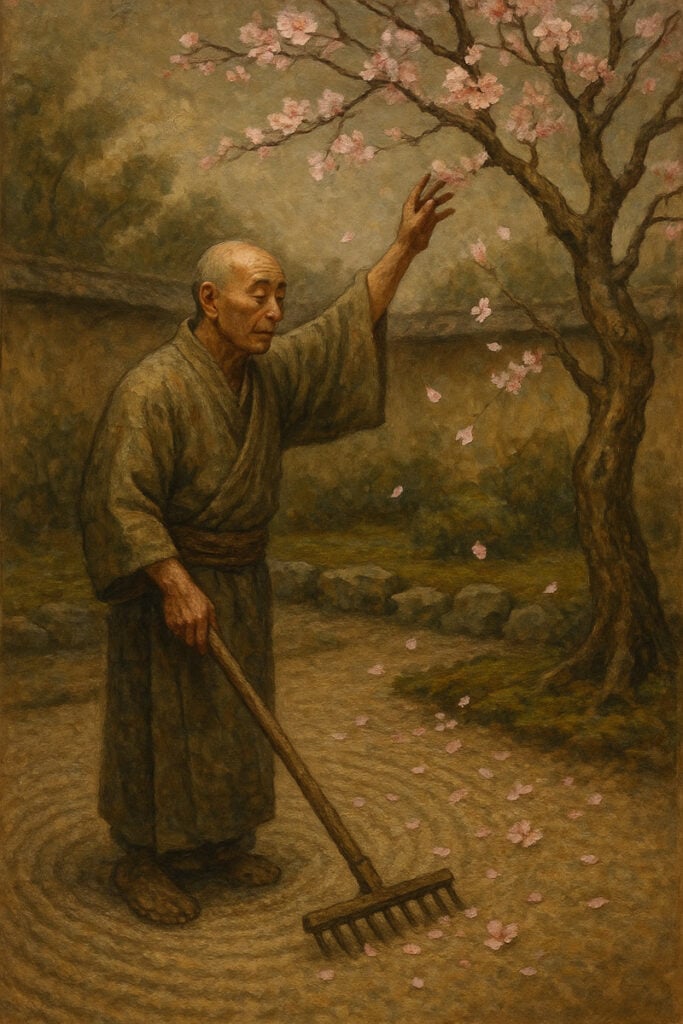
In design, this translates to a love for authentic, natural materials. It’s the weathered grain of a solid wood cabinet, the subtle variations in a slab of unpolished stone, or the unique form of a handcrafted ceramic vase. This isn’t about seeking out damaged goods, but rather choosing materials where slight irregularities are celebrated as a mark of authenticity and story. These are not flaws; they are the quiet evidence of a life lived, bringing a soulful, grounded character to a space that mass-produced perfection can never replicate.
The second key principle is ma, which can be understood as the art of negative space. Far more than simple emptiness, ma refers to the active, intentional space between things—the pause that gives shape and meaning to the whole. The Japanese kanji character for ma (間) beautifully illustrates this by combining the symbols for “gate” (門) and “sun” (日), evoking an image of sunlight streaming through the opening of a doorway. It is not an absence, but a presence. In an interior, ma is the uncluttered space that allows each piece of furniture to breathe, to be appreciated as a sculptural object in its own right. It challenges the Western notion that luxury is about accumulation, proposing instead that the ultimate luxury is clarity, focus, and mental calm.
The Scandinavian Heart: The Warmth of Human Connection
While Japanese philosophy provides the serene framework, the Scandinavian ethos infuses it with essential warmth and livability. This is embodied by the beloved Danish concept of hygge (pronounced “hoo-gah”).
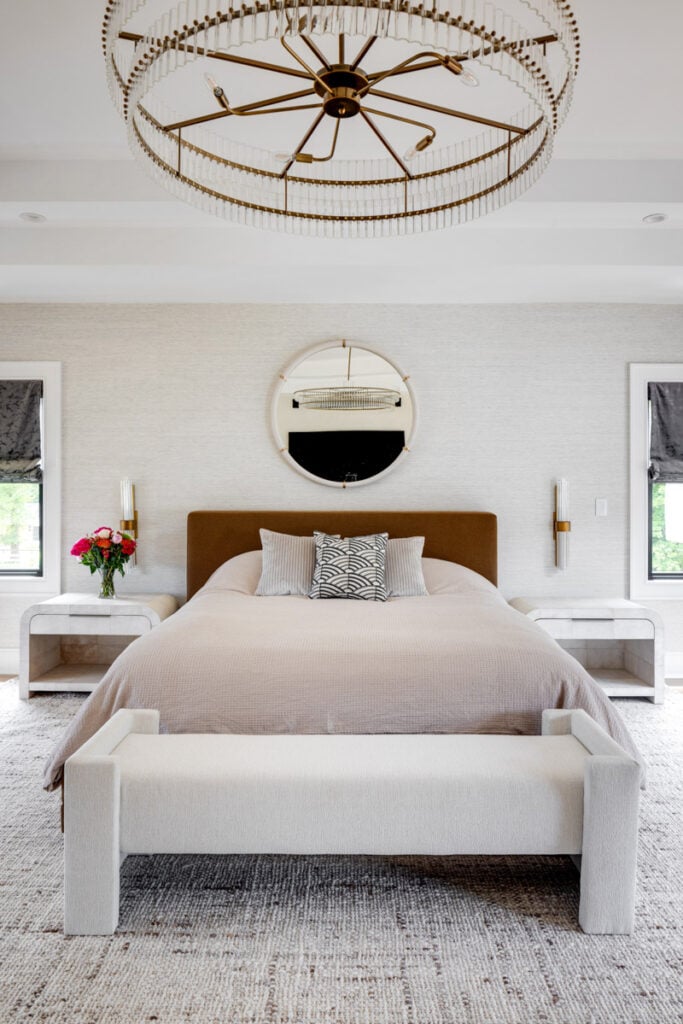
Hygge has no direct English translation, but it encompasses a feeling of profound coziness, contentment, and comfortable connection. It is a cultural response to the long, dark Scandinavian winters—a conscious practice of creating intimacy and security to counteract the harshness outside. It’s the simple pleasure of sharing a meal with loved ones, the soft glow of candlelight, or the feeling of being wrapped in a warm wool or sheepskin blanket.
In design, hygge translates into tangible elements of comfort that prevent the minimalist aesthetic from feeling cold or stark. It favors soft, layered lighting, plush natural textiles, and furniture chosen for its inviting, organic forms. It is the humanizing element in Japandi design, ensuring the home is not just a gallery for beautiful objects, but a warm, nurturing refuge for the people who live there.
Defining the Look: The Core Principles of Japandi Design
When these philosophies merge, a distinct aesthetic emerges, defined by a set of core principles that guide every design choice. It’s a style that is at once refined and deeply practical, creating spaces that are both elegant and effortlessly functional.
A Palette of Grounded Tranquility
The Japandi color palette is sophisticated and deeply connected to nature. It begins with a neutral base of warm whites, beige, taupe, and soft grays, creating a light and airy foundation reminiscent of Scandinavian design. However, Japandi grounds this lightness with a richer, more dramatic range of earthy tones. You’ll find accents of deep charcoal, muted olive green, dusty blues, and the warm browns of natural wood and stone. This introduction of darker tones adds depth, contrast, and a contemplative quality that feels both modern and timeless. The goal is to create an atmosphere that is calming and serene, yet also grounded and stable.
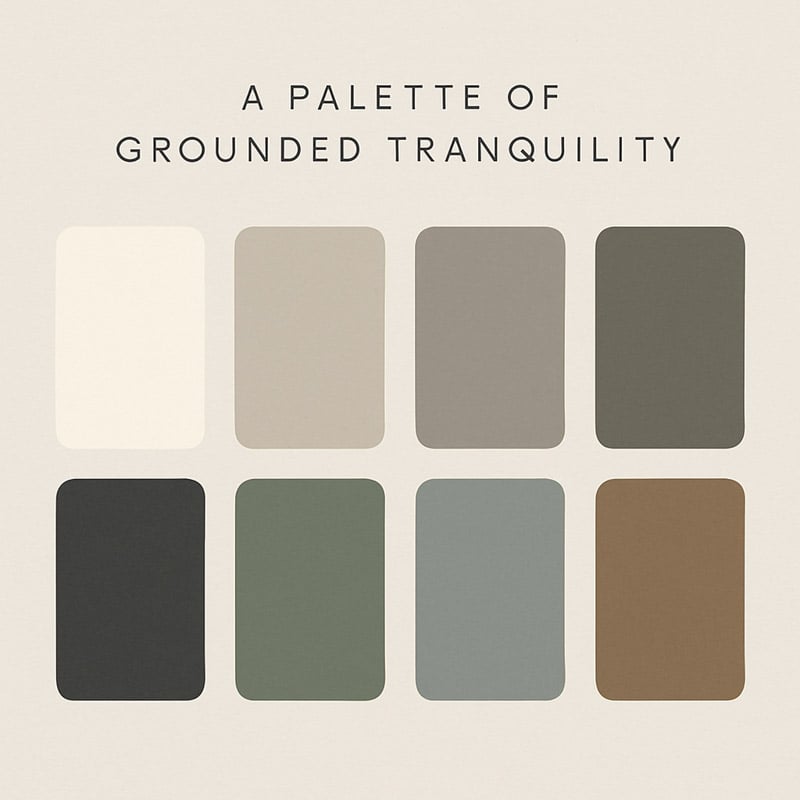
A Dialogue with Nature: The Material Palette
At Master Design Cabinetry, we believe that projects must be built using beautiful and quality materials. This is a belief we share with the Japandi philosophy, which prioritizes authenticity, texture, and natural origin above all else. The material palette is a curated conversation between different textures and tones, designed to engage the senses.
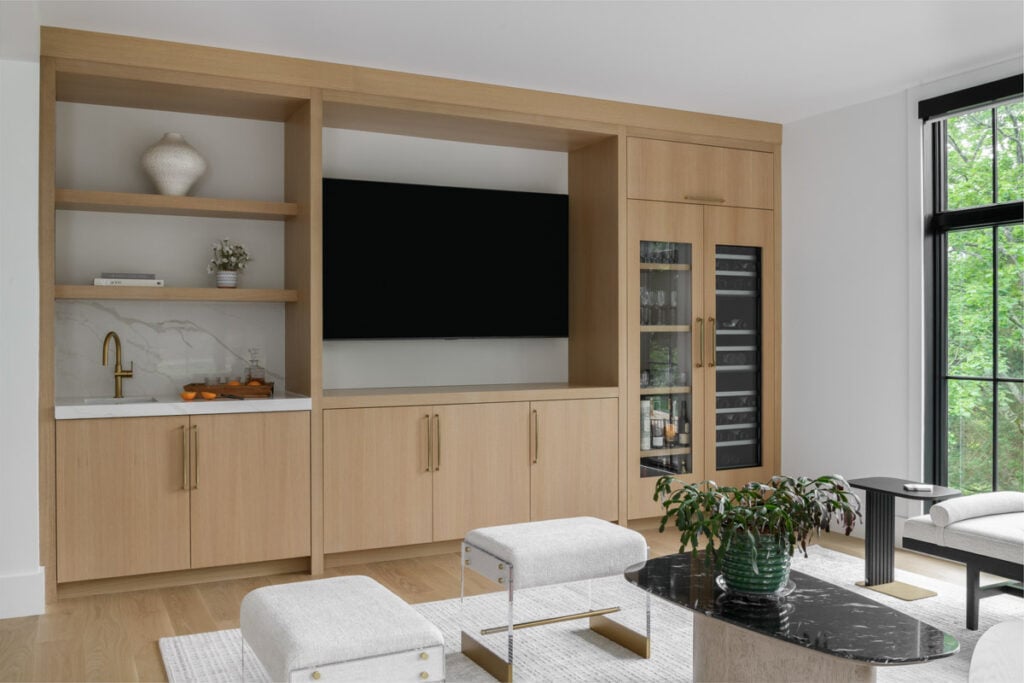
Wood as the Cornerstone: Wood is the heart of the Japandi interior, used for flooring, furniture, and, of course, bespoke cabinetry. The style embraces a mix of light and dark woods, often within the same space, to create subtle contrast. Light woods like oak, ash, and beech bring a Scandinavian brightness, while richer woods like walnut add Japanese depth. For high-end custom cabinetry, rift-sawn white oak is a particularly prized material. Unlike more common sawing methods, rift-sawing produces a beautifully straight, uniform linear grain. This clean, architectural pattern minimizes the visual noise of more dramatic wood grains, contributing to an overall feeling of serene order and refined elegance. Finishes are crucial; wood is typically treated with a matte or low-sheen finish that feels raw and authentic, celebrating the natural grain rather than concealing it under a high-gloss polish. For a point of dramatic contrast, some designs incorporate Yakisugi (Shou Sugi Ban), the traditional Japanese method of preserving wood by charring its surface. This technique creates a stunning, deeply textured black finish that is exceptionally durable and makes for a powerful accent wall or cabinetry feature.
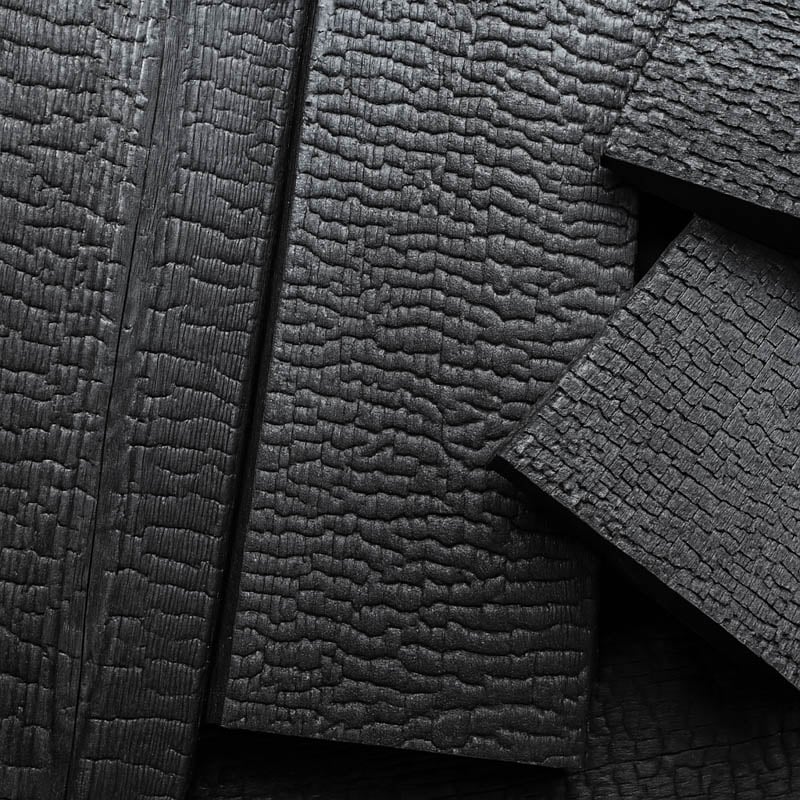
The Grounding Force of Stone: Natural stone provides a cool, monolithic counterpoint to the warmth of wood. Materials like travertine, with its naturally pitted texture and warm, earthy tones, are ideal. Its inherent variations and imperfections are a direct expression of wabi-sabi, celebrating the beauty created by nature over millennia. Honed marble and slate are also excellent choices. Stone can be used for flooring, statement fireplace surrounds, or as a durable and beautiful kitchen island.
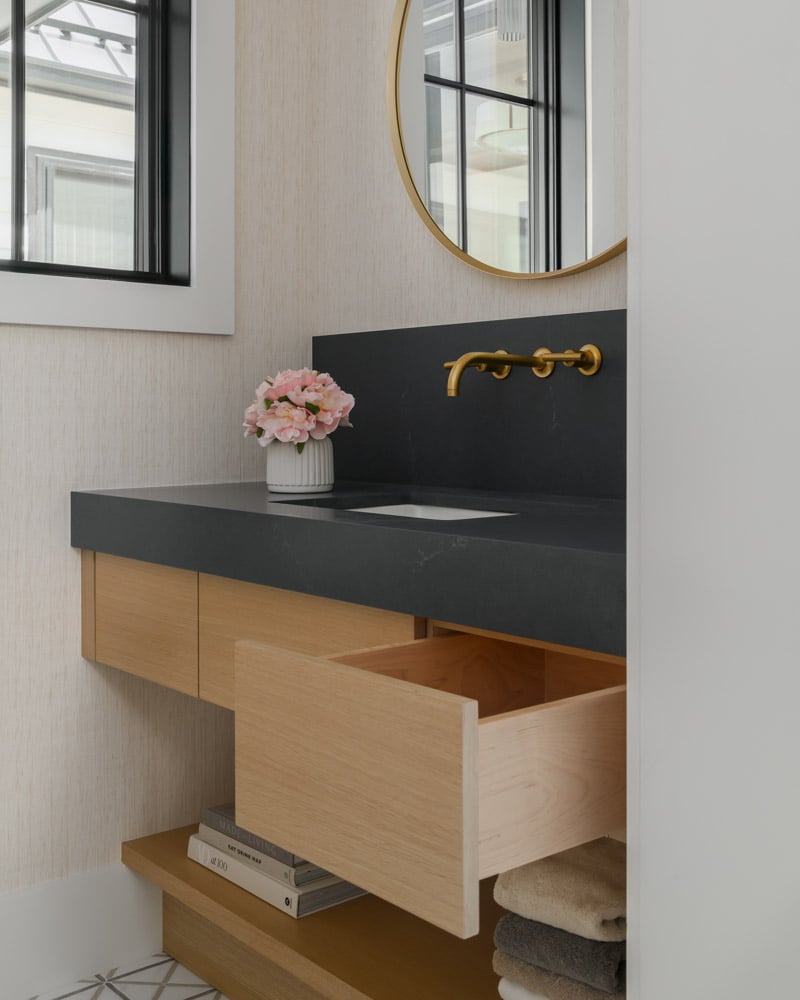
Layers of Tactile Softness: To ensure the minimalist space feels warm and inviting, Japandi interiors are layered with natural textiles. Linen curtains filter sunlight beautifully, while wool, cotton, and bouclé add softness and comfort in the form of rugs, throws, and upholstery. Woven elements made from bamboo, rattan, and jute in baskets or light fixtures—often featuring washi paper—add another layer of organic texture.
Subtle Metallic Accents: Metal appears in quiet, considered ways. Hardware, if used, is typically slim and minimalist—simple linear pulls or knobs in muted brass or matte black add a touch of subtle elegance without overpowering the natural materials.
The Celebration of Enduring Craft
Both Japanese and Scandinavian cultures share a profound respect for high-quality, artisanal craftsmanship. In a Japandi home, this is expressed through the deliberate inclusion of handmade objects. A set of hand-thrown ceramic dinnerware, a single sculptural vase, or a piece of furniture that showcases honest, traditional joinery adds a layer of soul and authenticity. This focus on craft is a quiet rebellion against a world of mass-produced, disposable goods. It champions the idea of “lasting value“—of investing in fewer, better things that are made with skill, care, and an intention to endure for generations.
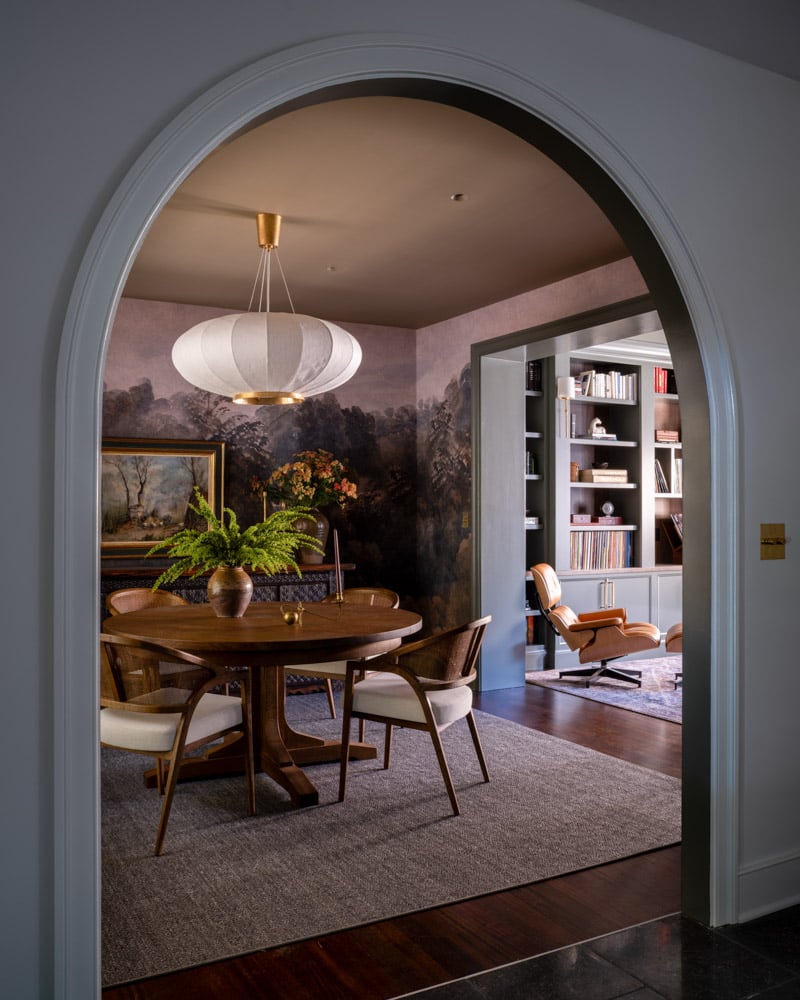
Crafting the Japandi Home: From Vision to Reality
Translating the Japandi philosophy into a living, breathing space is a process of thoughtful curation and meticulous execution. It’s about shaping an environment where elements have a purpose and every detail contributes to a feeling of tranquil harmony.
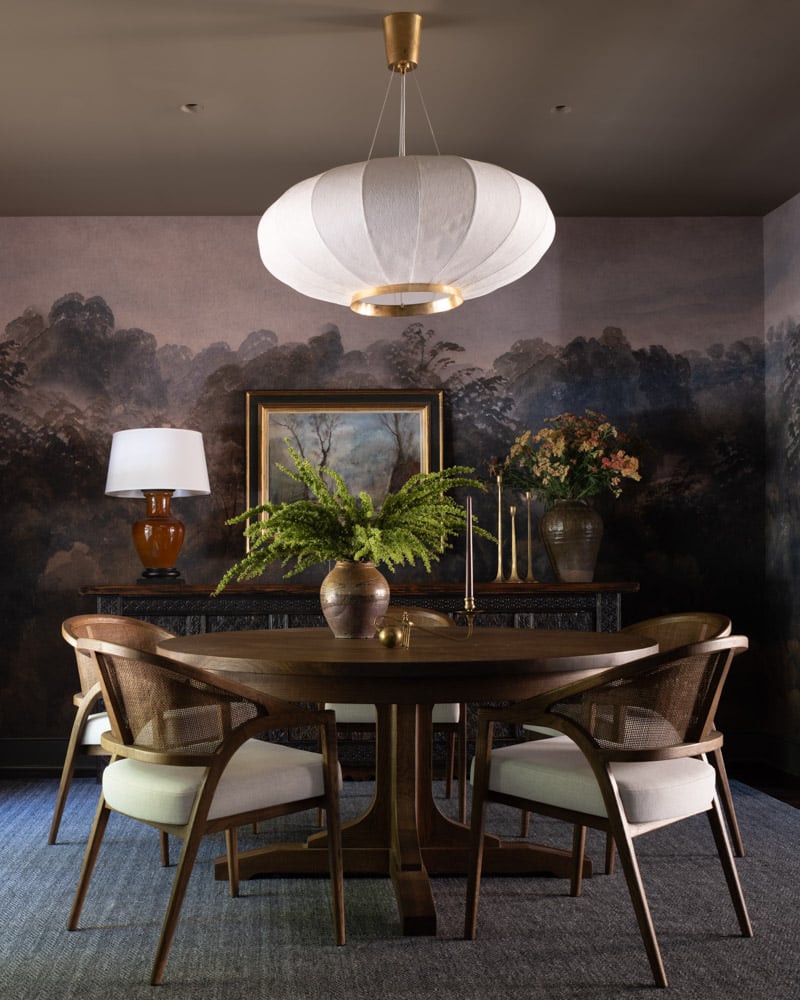
Sculpting with Space and Light
The composition of a Japandi interior is governed by a reverence for open space and natural light. Floor plans are often open-concept, prioritizing a seamless flow between living areas. This is a direct application of ma, where the uncluttered space allows for clarity of movement and thought. Furniture is placed with intention, creating clear pathways and allowing each piece to stand as a deliberate choice. Flexible space division is often achieved with translucent shoji-style screens, which define areas without blocking light or views.
Natural light is treated as the most precious material in the home. Windows are typically large and left unadorned or dressed with simple, sheer linen curtains that soften and diffuse sunlight without blocking it. The goal is to dissolve the boundary between inside and out, creating a constant connection to the rhythms of nature.
When daylight fades, a carefully layered artificial lighting scheme maintains the warm, serene atmosphere. Critically, all lighting should be warm (a color temperature between 2700K-3000K) and dimmable, allowing the mood of the space to be tailored from bright and functional to intimate and cozy.
- Ambient Light: The overall illumination is soft and diffuse, often from indirect sources like iconic paper lanterns (such as those by Isamu Noguchi) or architectural cove lighting.
- Task Light: Focused, functional light is placed where it’s needed—a minimalist reading lamp by an armchair or under-cabinet lighting in the kitchen.
- Accent Light: This final layer creates depth and a beautiful interplay of light and shadow, highlighting a piece of art or a textured wall.
The Heart of the Home: The Japandi Kitchen
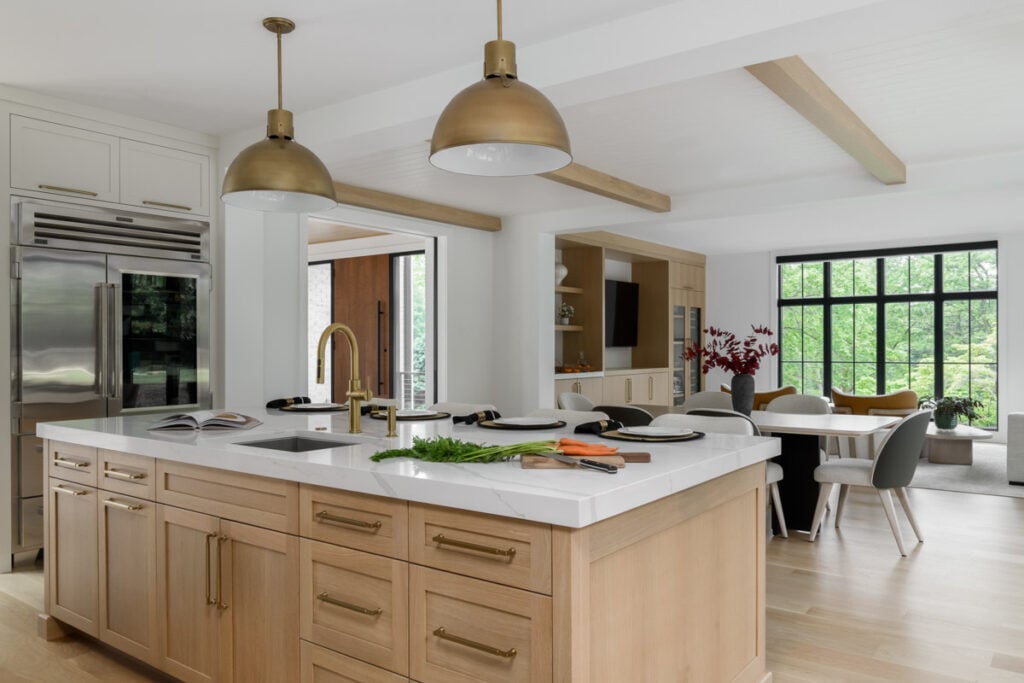
Nowhere is the Japandi fusion of serene beauty and exceptional function more apparent than in the Japandi kitchen. This space, so often the center of daily life, becomes a testament to minimalist principles without sacrificing an ounce of utility. At Master Design Cabinetry, we see the Japandi kitchen as the ultimate expression of our craft.
A key feature is the use of handleless cabinetry with clean, flat-front (or slab) doors. This choice is fundamental to achieving the uninterrupted visual lines that define the style. There are two primary approaches we take in our custom work:
1. Push-to-Open Systems: High-quality mechanical or magnetic latches allow doors and drawers to open with a gentle press. This creates a completely seamless, flat-fronted surface that makes the cabinetry feel like an integrated part of the wall architecture.
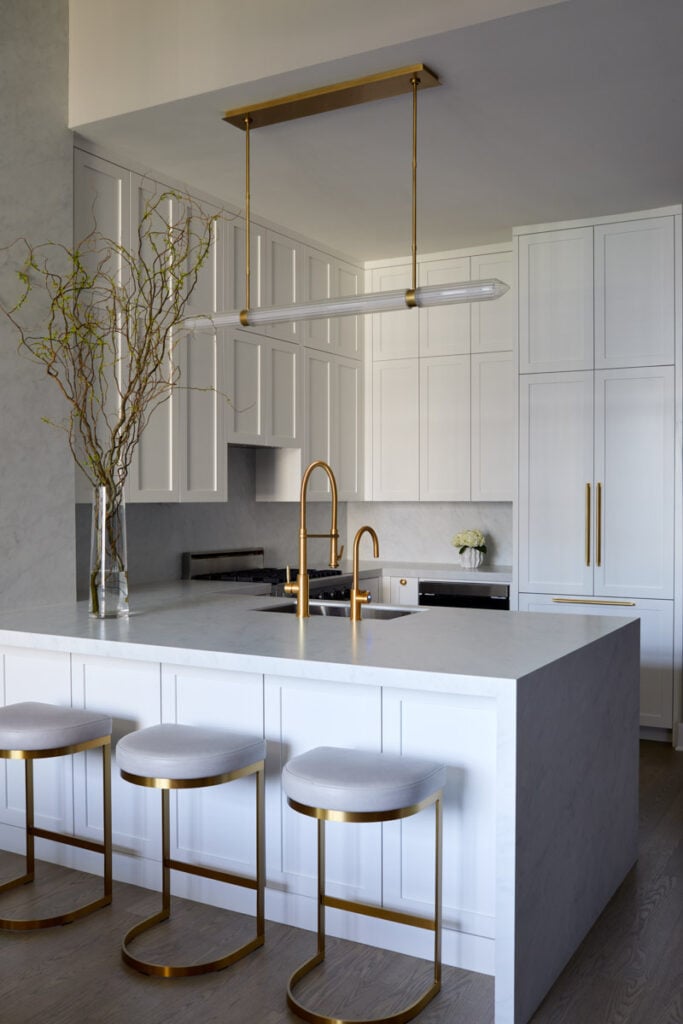
2. Recessed or Integrated Pulls: A channel or groove is meticulously crafted into the edge of the door or drawer. This provides a robust, hardware-free way to open the cabinetry while maintaining a minimalist profile.
A subtle but sophisticated detail seen in high-end Japandi cabinetry is a “framed-style” construction, where the cabinet box edges are slightly proud of the doors. This creates a clean, rectilinear frame that subtly nods to the grid-like structure of traditional Japanese shoji screens, adding architectural interest without ornamentation.
The serene appearance of a Japandi kitchen is made possible by sophisticated, integrated storage. Achieving a simple look requires complex, thoughtful design. Our collaborative process involves a deep consultation about our clients’ lifestyles to engineer the underlying systems that make an uncluttered life feel effortless. Key innovations include:
Drawer-in-Drawer Systems: A shallow drawer for utensils can be nested inside a deeper drawer for pots, effectively doubling storage capacity behind a single clean front.
Appliance Garages: These dedicated cabinets hide toasters, blenders, and coffee makers, keeping countertops clear and calm.
Integrated Appliances: Panel-front refrigerators and dishwashers blend seamlessly with the surrounding cabinetry, maintaining a cohesive and uninterrupted flow.
This balance of concealed storage for everyday necessities and a few carefully curated open shelves for beautiful objects is the key to achieving a space that is both practical and peaceful.
Furniture and Objects: The Art of Selection
In a minimalist interior, every object carries significant visual weight. Furniture is chosen not as filler, but as a collection of functional sculptures. Pieces are characterized by impeccable craftsmanship, clean lines, and often a low profile that enhances the sense of space. The focus is on timeless designs crafted from high-quality natural materials that will last a lifetime, from brands like Karimoku and Maruni who are masters of this aesthetic.
A subtle but profound mark of luxury and authenticity is the use of traditional Japanese joinery, or kigumi. This ancient craft creates incredibly strong and intricate connections between pieces of wood entirely without nails or screws. These beautiful joints are often celebrated as a design detail, a testament to the artisan’s skill and a deep respect for the material. A bespoke dining table or bench featuring this master craftsmanship becomes more than just a piece of furniture; it becomes a legacy piece, embodying the Japandi principles of quality and enduring value.
Living with Japandi: A Thoughtful Approach
Embracing Japandi design is about adopting a mindset as much as an aesthetic. It involves a thoughtful approach to consumption, a respect for heritage, and a commitment to creating a home that truly nurtures.
One question that often arises is whether Japandi is a passing trend. All signs point to it being a lasting approach in luxury design. Google search data shows interest in “Japandi” hit a record high in the U.S. in 2025 and continues to grow. It’s grounded in timeless principles—quality, simplicity, and comfort—that never go out of style. Its versatility allows it to be adapted to various architectural contexts, from modern new builds to historic New England Colonials, proving it can bridge old and new with grace.

Finally, the Japandi ethos is inherently sustainable. The emphasis on high-quality, natural materials and timeless design is the antithesis of throwaway culture. Answering the question of whether Japandi is expensive requires a shift in perspective: it is an investment in longevity, not a fleeting expense. Choosing a solid wood, handcrafted cabinet over a mass-produced alternative is a choice for durability. This is an investment in a piece that will not only last for generations but will also grow more beautiful with time, its patina telling the story of the life lived around it—a perfect expression of wabi-sabi.
A Partnership in Creating Your Sanctuary
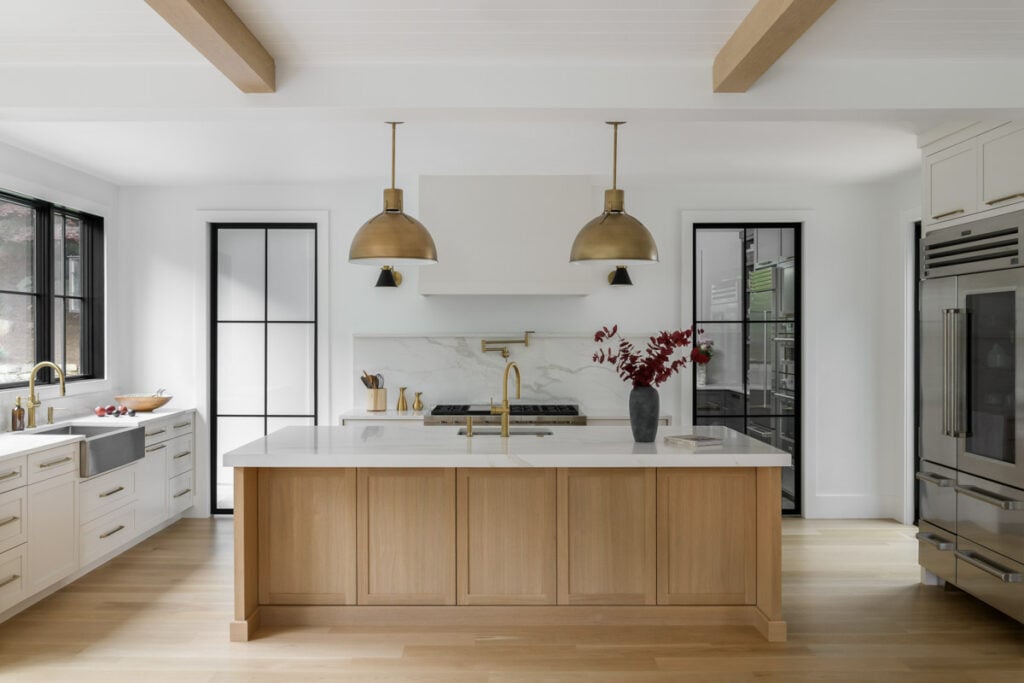
Japandi design is far more than a passing trend. It is a compelling answer to a modern need for homes that serve as sanctuaries—spaces that are calm, organized, and deeply connected to nature. It is a philosophy that finds luxury not in opulence, but in simplicity; not in perfection, but in authenticity; and not in accumulation, but in intention.
These are the very principles that guide our work at Master Design Cabinetry. We believe in a collaborative partnership with our clients and their design teams to create bespoke solutions that are perfectly tailored to their vision. If you are seeking to bring a new level of tranquility and timeless elegance to your home, we are here to help you explore the possibilities. Let’s create a space that is not only beautiful but feels, in every essential way, like home.

